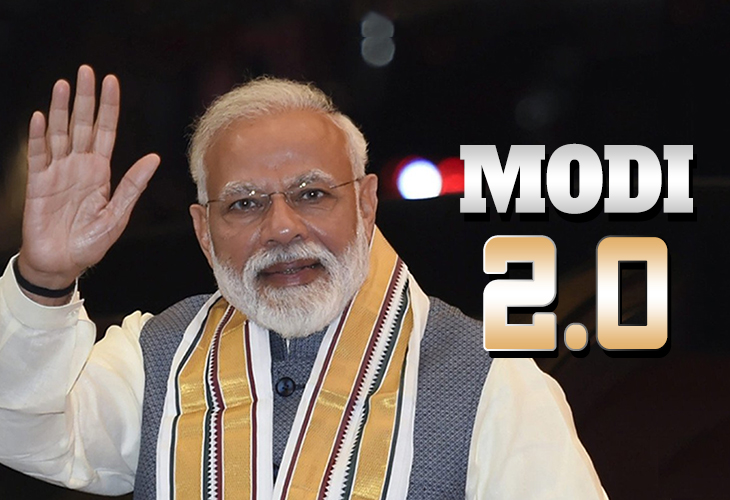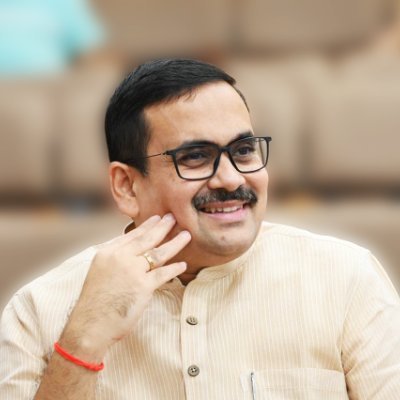In its long innings in power, for over five decades, the Congress party hardly ever emphasised the need for performance, capacity and capability when it came to forming the union cabinet. That it was never serious about talent and never emphasised domain expertise is clear from two incidents, one: Nehru did not allot the education portfolio to Syama Prasad Mookerjee, in free India’s first cabinet, despite the latter being one of the leading educationists of India who became the youngest Vice-Chancellor ever of an Indian university – the Calcutta university – at the age of 33 years. Nevertheless, as Industry and Supply Minister, Dr Mookerjee, proved himself by laying a solid foundation for India’s industrial march. But the question remained, on why Nehru did not appoint Dr Mookerjee India’s first education minister and instead allotted the portfolio to Abul Kalam Azad, who had no connection with education or education administration.
The other example that comes to mind, is again from the field of education, during Indira Gandhi’s tenure. One of the most respected educationist politicians, Dr Triguna Sen, a first Vice Chancellor of Jadavpur University, in Kolkata, Vice Chancellor of Banaras Hindu University till he was elected as member of the Rajya Sabha, saw his tenure cut short as India’s education minister. It did not matter to Indira Gandhi that Sen, was a very well known and respected educationist and education administrator and had he continued India’s education vision and ethos would have seen a difference and would have been rooted in India’s civilisational vision. A few years after Dr Sen, Indira appointed Nurul Hassan, as education minister, gave him a full tenure of five years and through him handed over the control of India’s educational and research institutions to the communists.
One more interesting aspect emerges, when we speak of Triguna Sen. Dr Sen, was elected from Tripura as member of the Rajya Sabha but was a resident of West Bengal and since he became education minister, for long five decades Tripura had representation in the central cabinet. Despite being a small but strategically important state, Tripura never had a permanent resident of the state as minister in the union cabinet. With the appointment of Pratima Bhaumik, that long neglected dimension has been addressed. Besides being one of the most active and long-standing workers and leaders of the party in Tripura, a very rooted leader, from a very humble background, someone who has come up from the grassroots through the organisation, Bhaumik brings with herself a solid parliamentary and political experience.
In this context one must also remember that it is in PM Modi’s tenure that Northeast is seeing greater infrastructural inclusion and growth. Why did the Congress, which, for decades, had its government in the several north-eastern states and at the centre in Delhi, never pushed for greater infrastructural facilities and connectivity and growth for the entire North-eastern region? It is during PM Modi’s tenure that such aspects were realised. The trial run of the first passenger train from Assam’s Silchar to Vaingaichunpao in Manipur’s Tamenglong is the latest case in point.
Why did it not strike the Congress that states like Tripura ought to be given representation in the union cabinet, why did it not strike the CPIM, which ran a government in the state for twenty-five years, that when it was the principal ally of the UPA-1, that the state needed to have a representation in the union cabinet? Narendra Modi, driven by the mantra of team India, by inclusion and by its fundamental belief that all regions and sections of Indian society must be given scope and opportunity to have their representative at the highest levels of the government and administration. In its most recent expansion, the Modi cabinet has a wide regional and societal sweep.
We are reminded that it was the BJP led NDA, under Atal Bihari Vajpayee, which had ensured that India’s Parliament saw its first Dalit Lok Sabha speaker elected in GMC Balayogi. The BJP’s record is clear, even during the days of the Jana Sangh, the party had always championed the cause of the marginalised sections of society and spoke of empowering them and making them equal stake-holders in power. When in government, we clearly see that PM Modi, in his seven years in power, has not only emphasised this dimension but has also implemented it in his own cabinet and in the states where the BJP is in power.
The Congress would also not tolerate talent and capability. Any leader or minister who showed exceptional capacity, or had mass acceptability was side-lined or packed off. Modi and the BJP, on the other hand, has emphasised on talent and capability. He has repeatedly conducted detailed and comprehensive reviews of how his ministers were working, he has always insisted for a vision map and for a roadmap for implementing that vision. He has always insisted that his ministers reflect the aspirations of young, new and marginalised India and work for evolving a comprehensive and all-encompassing vision for India’s comprehensive growth. With 78 ministers in his council of ministers, 25 states of India have now been represented, never perhaps a central ministry seen such a wide sweep and reach in terms of representation.
PM Modi’s cabinet 2.0 has eleven women ministers including two in the cabinet, fourteen ministers are 50 years old, including 6 in the cabinet, the average age of the council of ministers is 58 years, it has 6 doctors, 7 PhDs, 3 MBAs, 7 civil servants, 5 engineers and 13 lawyers. Professional experience, domain expertise, political rootedness and persons connect are dimensions which have found expression in this expansion. Another interesting point is that 46 ministers have been ministers in the central government, former chief ministers, former state ministers, long-time parliamentarians all have found a place in the cabinet, which also indicates that the Modi government is extremely serious about administrative performance and delivery. The Nehru-Indira-Rajiv Congress which never nurtured grassroots leaders, which at times allowed a clutch of bureaucrats to run the government and the party, and whose ruling dynasty destroyed the party’s base across the country, should avoid trying to comment on this expansion. With 12 SC ministers from 8 states, 8 ST ministers from 8 states, 27 OBC ministers from 15 states, all sections of minorities have been represented, it is one of India’s most inclusive cabinets ever since independence.
It has taken seventy-five years for India to reach this stage and this has been possible because of a party like the BJP – a party which aims to realise India’s national interest, and a leader like Modi – a leader for whom the mantra of ‘India First’ is paramount. India First can only be realised, when it has representations from all sections and regions, this new cabinet reflects the spirit and essence of ‘Team India’ and is a real tribute to India’s democratic, electoral, governance and parliamentary journey on the eve of her seventy-fifth independence year.
(The writer is the Director of Dr Syama Prasad Mookerjee Research Foundation. Views expressed are personal)
Image Source: https://resize.indiatvnews.com
(The views expressed are the author's own and do not necessarily reflect the position of the organisation)


